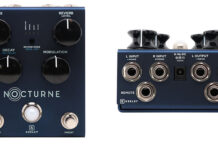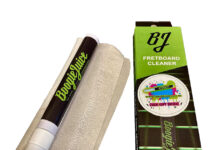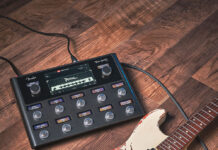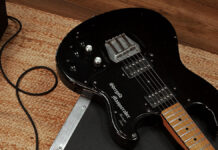How to Play Robin Trower's "Bridge of Sighs"
In the spring of 1974, former Procul Harum guitarist Robin Trower struck gold with an album called Bridge of Sighs. The disc, which represents the British guitarist’s breakthrough (and even went gold that September), is packed with gem after gem, including “Too Rolling Stoned,” “Day of the Eagle” and “Little Bit of Sympathy.”
But the album’s most famous tune is its title track, a dense, swirling piece of Jimi Hendrix-inspired magic, which you can check out right here:
“I had the first line to ‘Bridge of Sighs’ for a long time, but I couldn’t come up with a title to hang it on,” Trower told Guitar World in early 2015. “Then one day, I was reading the sports pages and came across a racehorse named Bridge of Sighs and thought, What a great title!
“The guitar sound on Bridge of Sighs was my invention, but [Beatles engineer Geoff Emerick] came up with the way of capturing it to its fullest, and he had a hell of a lot to do with the success of the record….While we played, Geoff just listened while he walked around the room and placed the mics where he thought things sounded best. He basically put one mic close to the amp, one mid field and one far away. There was no science—it was just him and his magic set of ears.
“[Gear-wise], there was no magic 100-watt Marshall or special guitar. Almost everything I owned was pretty new. I just went to Manny’s, the legendary guitar shop in New York City, and listened to about six or eight Strats acoustically and settled on a black one and a white one. I used those for quite a while. I’m not overly picky.”
These days, Trower uses effects designed for him by Mike Fuller at Fulltone. “He created my signature RTO overdrive that allows me a little more drive without losing the clarity of the note, which is really important to my sound,” Trower said. “It allows me to keep what I call the ‘front end’ of the note. There’s no mush. In fact, I use the overdrive all the time, and when I want a cleaner sound I just turn down. That’s one of the great benefits of having a name! [laughs] You can get things made to your specifications.
“But I also think using heavier strings is an important key to maintaining a nice clear midrange. About 20 years ago I started tuning down a tone so I could use a heavier .012 on the E string and a .015 on the B string and still do all my bends. And using higher action helps. It’s all about getting those strings to ring acoustically, which translates into a great electric sound. That’s where the sound comes from, and you can’t create it after the fact. An instrument always has to sound good acoustically. If it doesn’t, you lose a lot of musicality.”
Trower explains his psychedelic blues tone and shows off his Fulltone pedals in this 2016 video posted by Guitarist (Music Radar):
In terms of how to play “Bridge of Sighs,” we heartily recommend a video by guitarist Brett Papa, who does a fine job of nailing Trower’s touch. Although there are no tabs (enough already with relying on tabs, people), Papa patiently and slowly breaks down the different sections of the song—and even includes a few of Trower’s tricks, including sweeping back and forth on the Strat’s five-way switch while hitting certain out-of-this-world bends.
If you want to do more research on exactly how Trower got his unique, dark tone on the song, you might want to start here and here—and maybe even here.
You can check out Papa’s lesson video below. For more about Trower, head here. Enjoy!
Source: www.guitarworld.com











